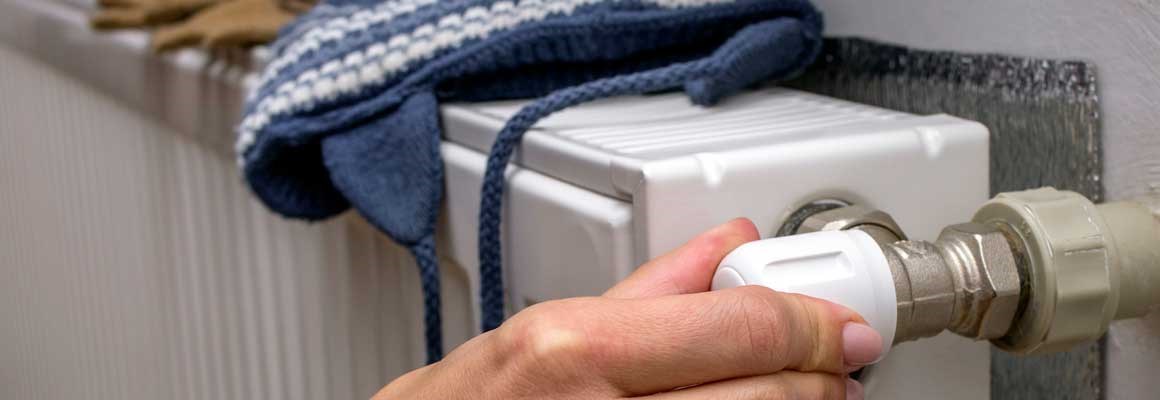How to prevent your pipes from freezing or bursting
As winter sets in, your pipes are at risk of freezing and bursting if you don’t take sufficient precautions.
Burst pipes can leave you with serious damage to your property, and it’s clearly a common issue, with the Association of British Insurers (PDF 783KB) estimating that ‘escape of water’ accounts for 26% of all Domestic Property Insurance Claims.
Read on to find out how you can prevent this from happening in your home, and what steps to take if it does...
Four tips to prevent frozen or burst pipes
1. Insulate, insulate, insulate
Your pipes are less likely to freeze if they've been correctly insulated – pre-formed foam insulation should do the trick. Just make sure there are no gaps, and tape them up if there are.
Also, maybe it's time you treated your hot water tank to a new winter coat! According to TheGreenAge, wrapping up your water tank with a British Standard 'jacket' can also cut heat loss by over 75%. Read more about how you can keep the heat in here.
Be sure to pay particular attention to any piping and water tanks in your loft or attic, as their location makes them more susceptible to freezing.
Also, if there are any cracks or holes around your pipework, this is when you should fill them in to keep out that cold air.
2. Tend to your taps
Dripping taps driving you doolally? While undoubtedly annoying, your main concern should be that faulty taps are a major cause of piping problems in the colder months, as they're more likely to freeze. Get them fixed ASAP!
If the temperature outside has really plummeted, it's also a good idea to keep a couple of your taps running slowly at all times, to keep water flowing through the system.
Don't forget your outdoor taps, which should be drained and wrapped with an outdoor tap 'jacket', to prevent any damage.
3. Keep an eye on your heat settings
If you're going to be away from your property for an extended length of time, it's a good idea to leave your heating on at a low setting – doing so will keep your pipes warm and prevent them from freezing.
4. Open your doors
To keep warm air circulating through your home, keep your interior doors open. If you have pipes or water tanks in your loft or attic, open the hatch to allow warm air to flow. Even keeping your kitchen doors slightly ajar will be beneficial to your pipes, which are often located in cabinets.

Four things to do if your pipes have frozen
Unfortunately, things don’t always go to plan! If, even after taking preventative measures, your pipes still freeze, follow these steps:
1. Turn off the water supply
Knowing where your stopcock is located will make this task easier, so make sure you make yourself aware of its location ahead of time. Turning off the water supply will help to minimise any damage, should the pipes end up bursting.
2. Locate the frozen pipes
Try feeling your pipes to find any frozen areas. Or, trying your taps in different rooms can pinpoint any freezing that’s occurred, if there is little to no flow of water. You may also be able to actually see areas of bulging in your pipework.
3. Move your belongings
Once you’ve identified where the frozen pipes are, make sure you protect your possessions from potential water damage, by moving them out of the way. This is particularly relevant for electrical items and any valuables. Remember to cover your electricity mains box if the frozen pipes are close by.
4. Thaw out the pipes
Thaw your frozen pipes with a hairdryer, or with towels soaked in warm water. Start with the area closest to the tap, and working your way towards the coldest part. To allow the frozen water to flow out, turn on any nearby taps.
Unsure? If you don't feel confident at any point, call a professional plumber.
Five things to do if your pipes have burst
Firstly, stay calm – while this is clearly a less than desirable situation, panicking won’t help matters. Take the following steps to minimise water damage to your home:
1. Turn off the water supply
Again, this is where knowing exactly where your stopcock is will come in handy – turning off the water supply is the first thing you should do if your pipes have burst.
2. Turn on all your taps
The idea here is to drain your system as much as you can, to prevent water from spilling through your home. Turning all your taps on will help get as much water out as possible, as will flushing your toilet/s.
3. Turn off the electrics and heating
This is especially important if the burst pipes are near any switches or fuse boxes, but is generally a good precautionary measure.
4. Contain any excess water
Get out the buckets, pans and any other large containers to collect as much escaped water as you can, to avoid damage to your home. Use a mop and towels to soak it up from the floor, and block it from entering any rooms with sandbags, if you have them readily available.
Find out more about how to protect your home from damage caused by escape of water and flooding.
5. Call your insurer
Tell your Home Insurance provider as soon as you can about any burst pipes, and they will advise on the claims process. Remember to take photos of any damage.